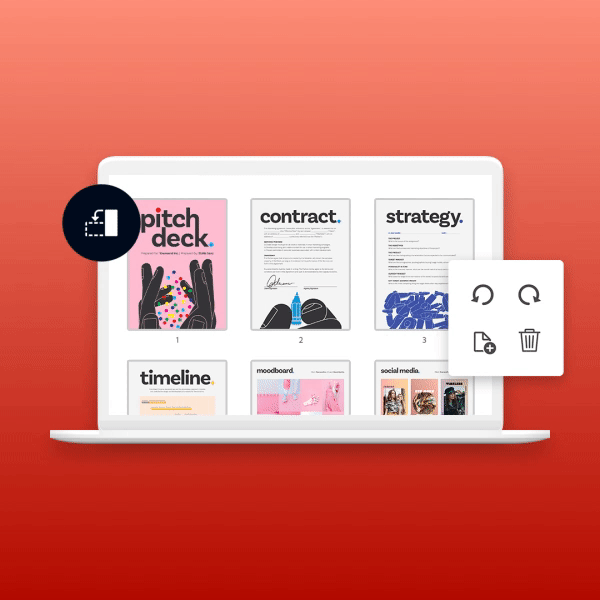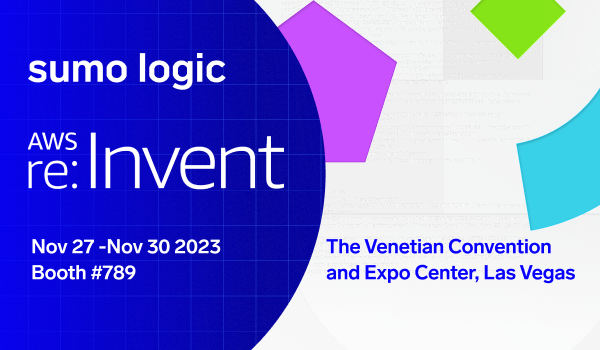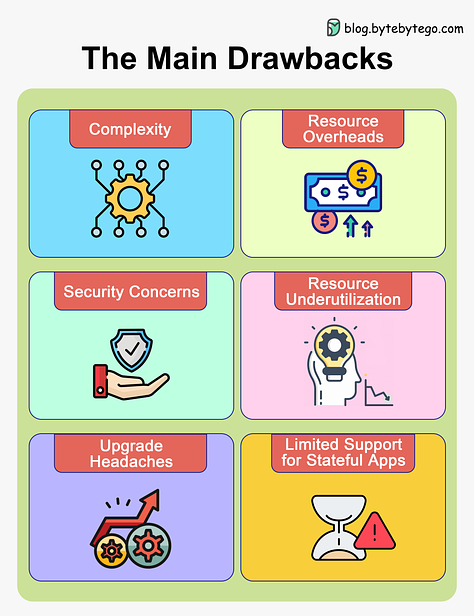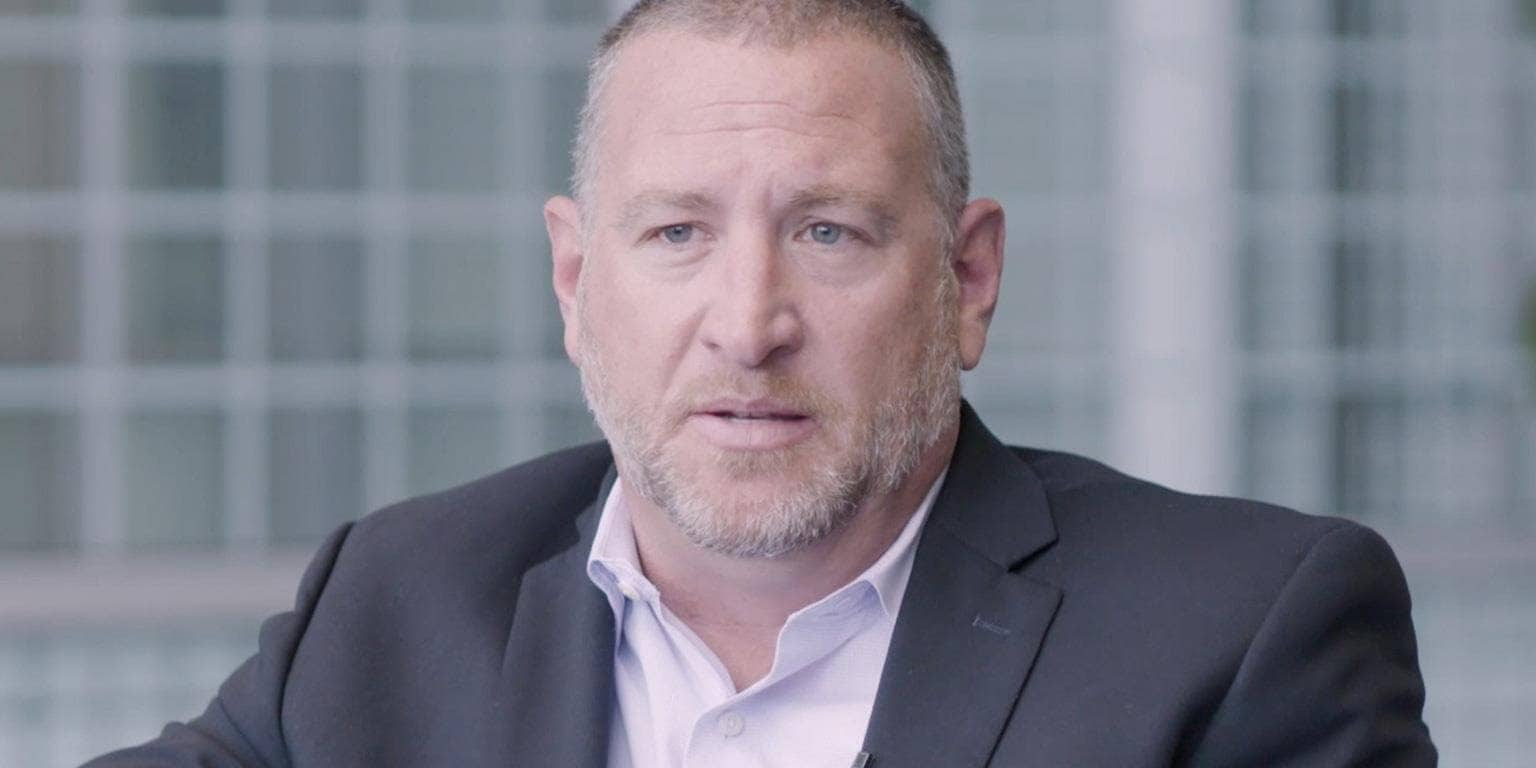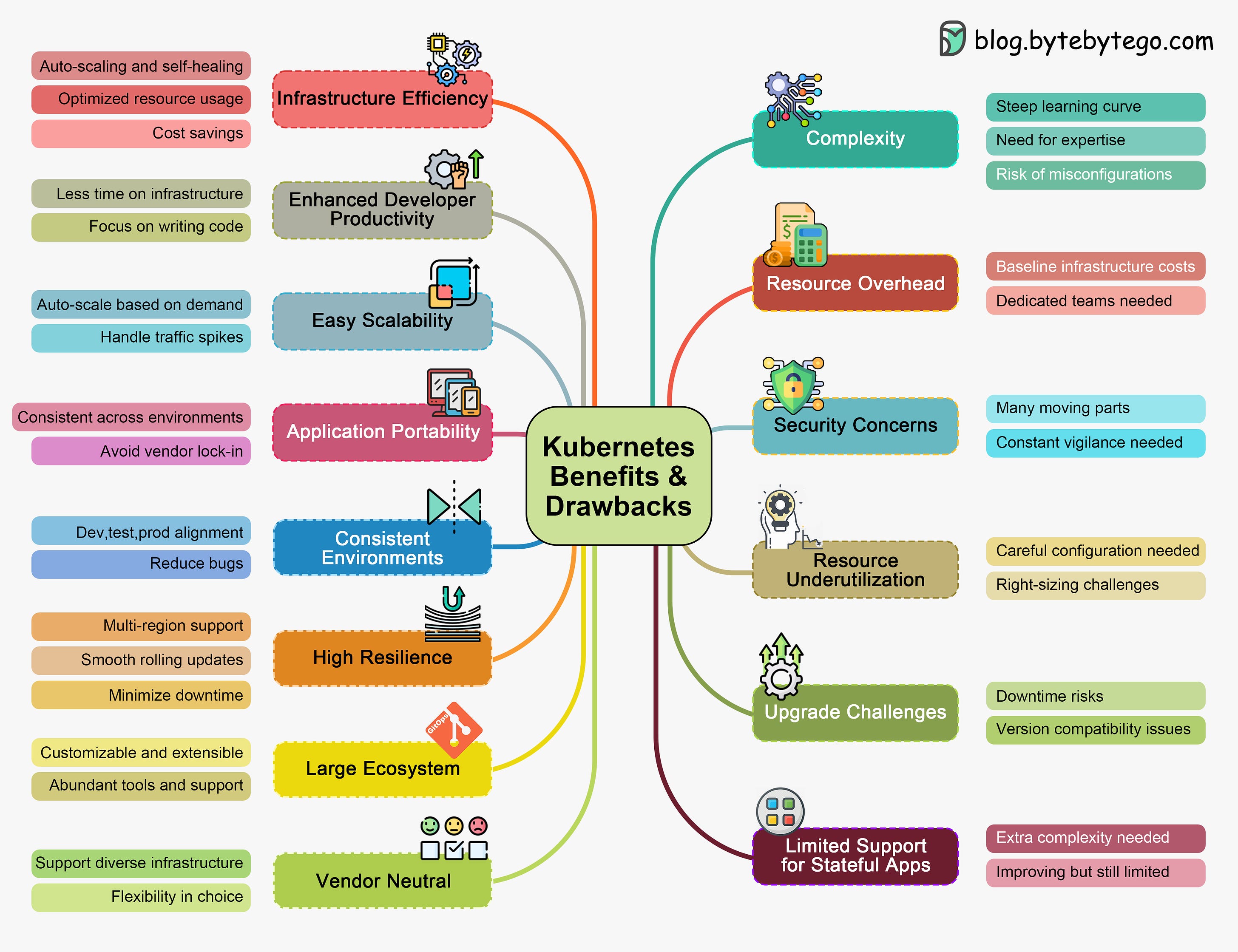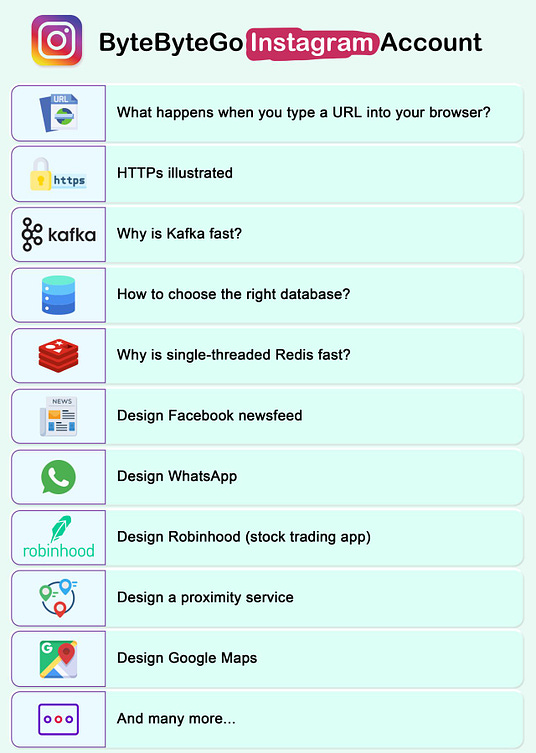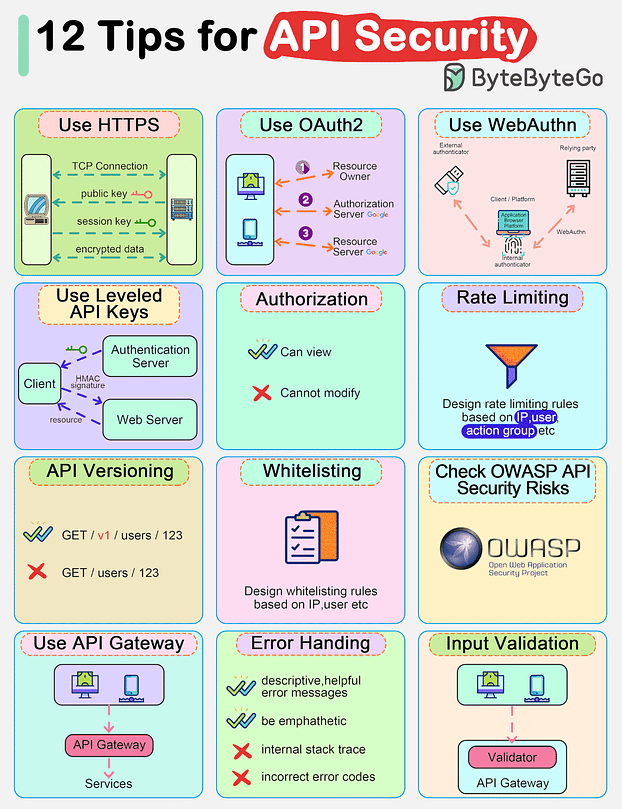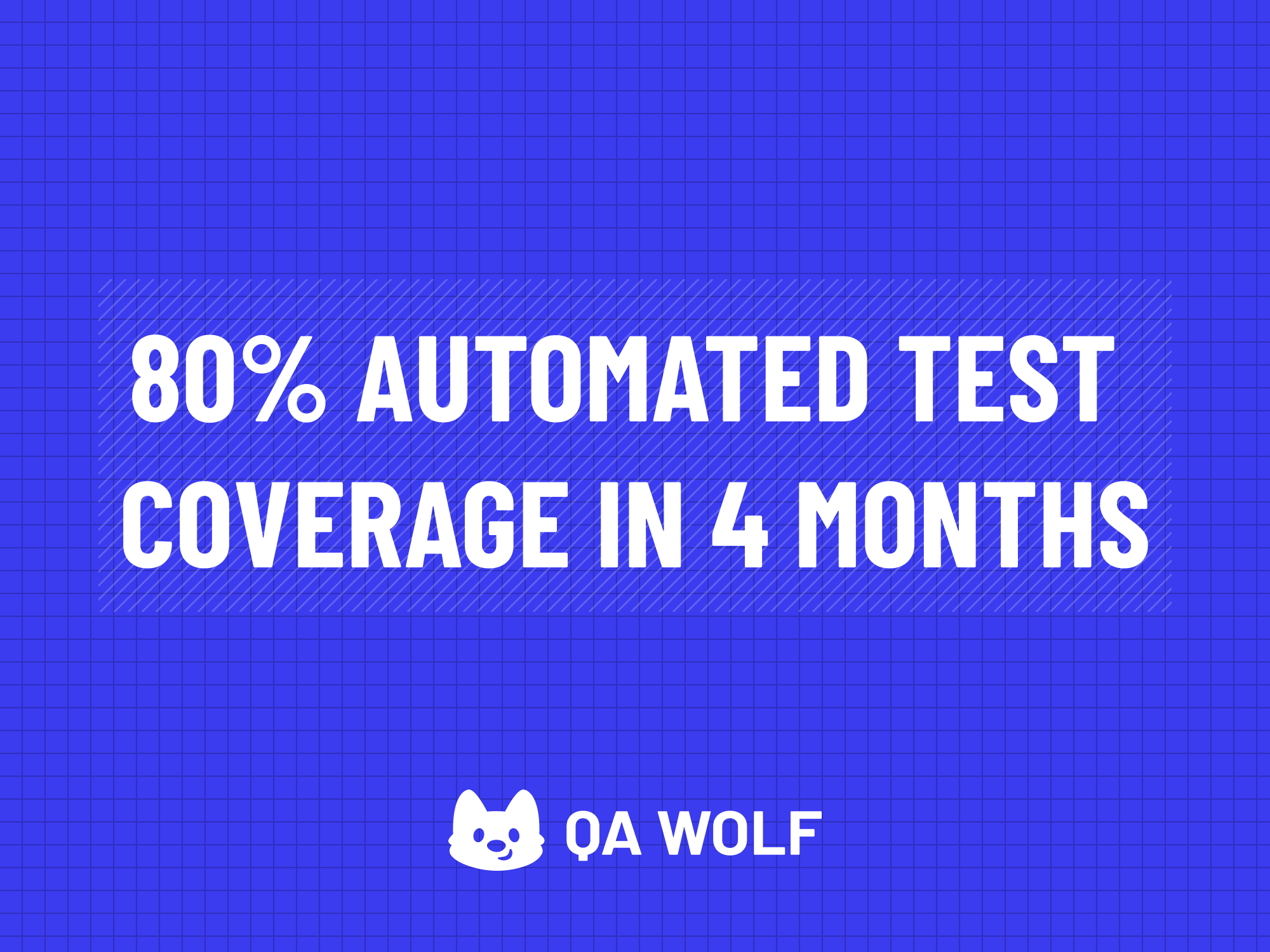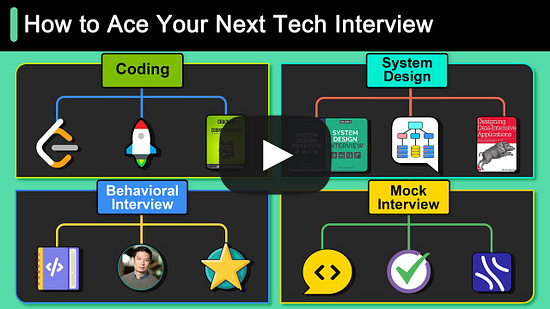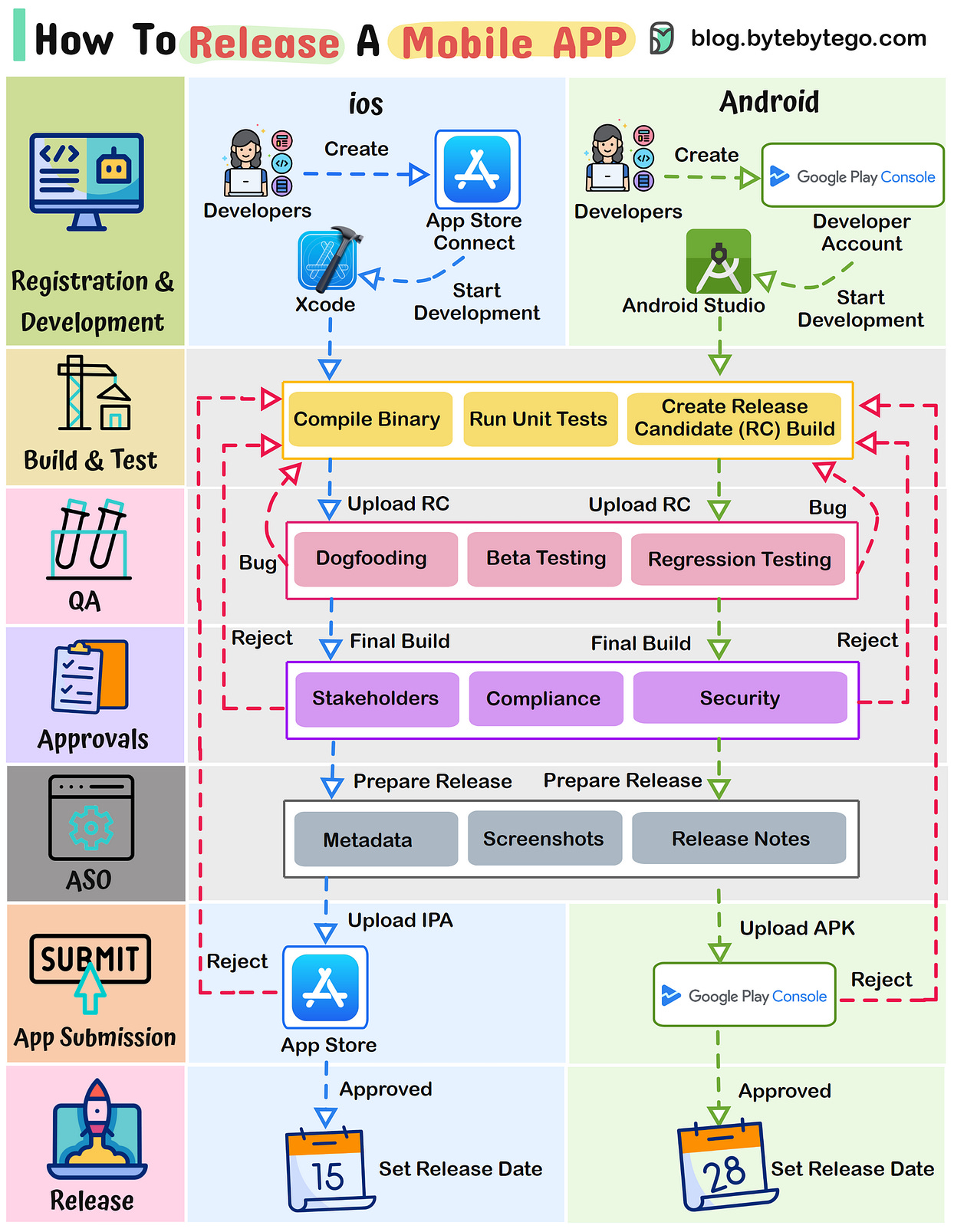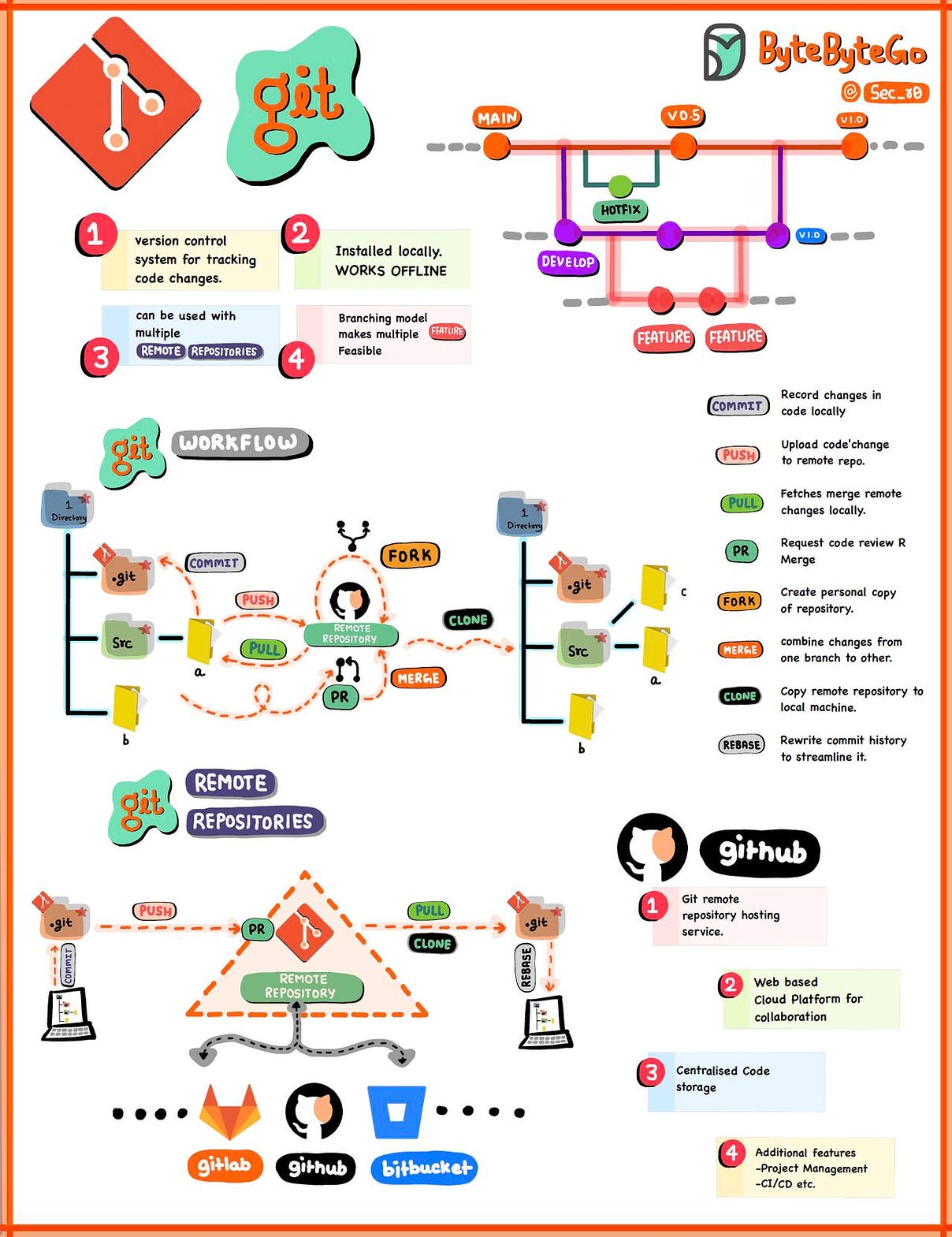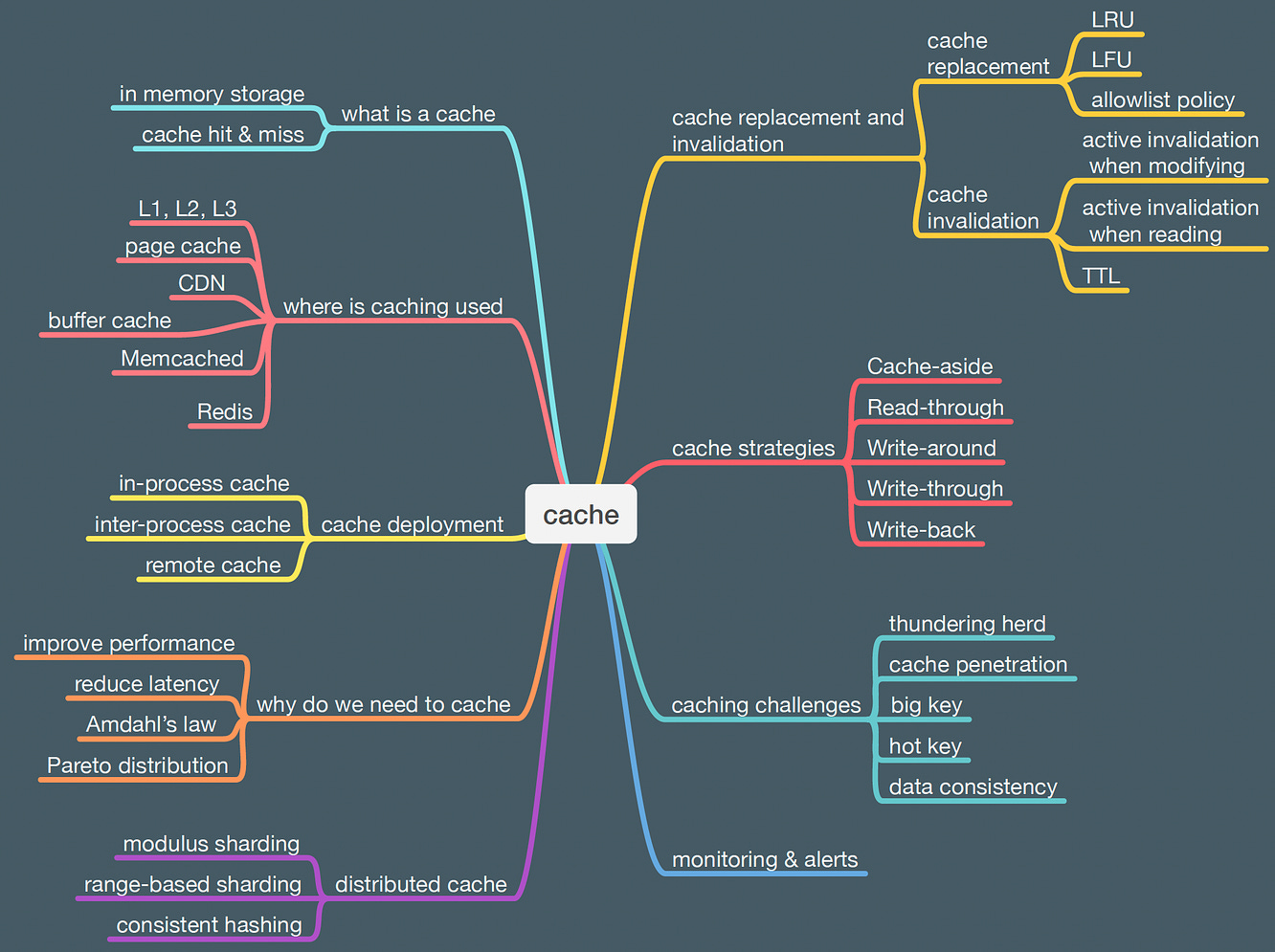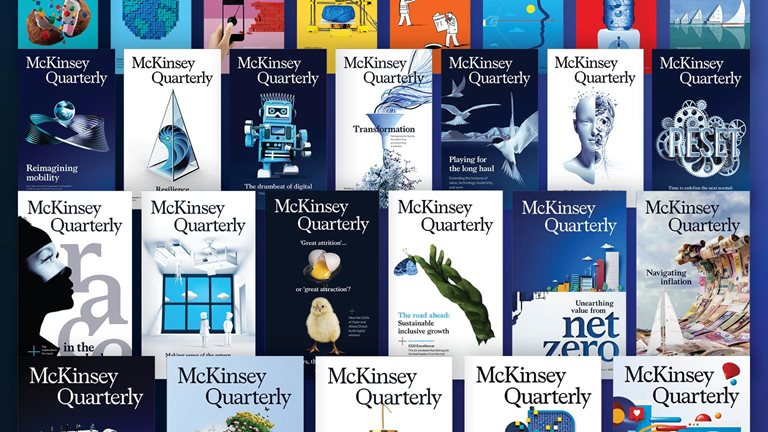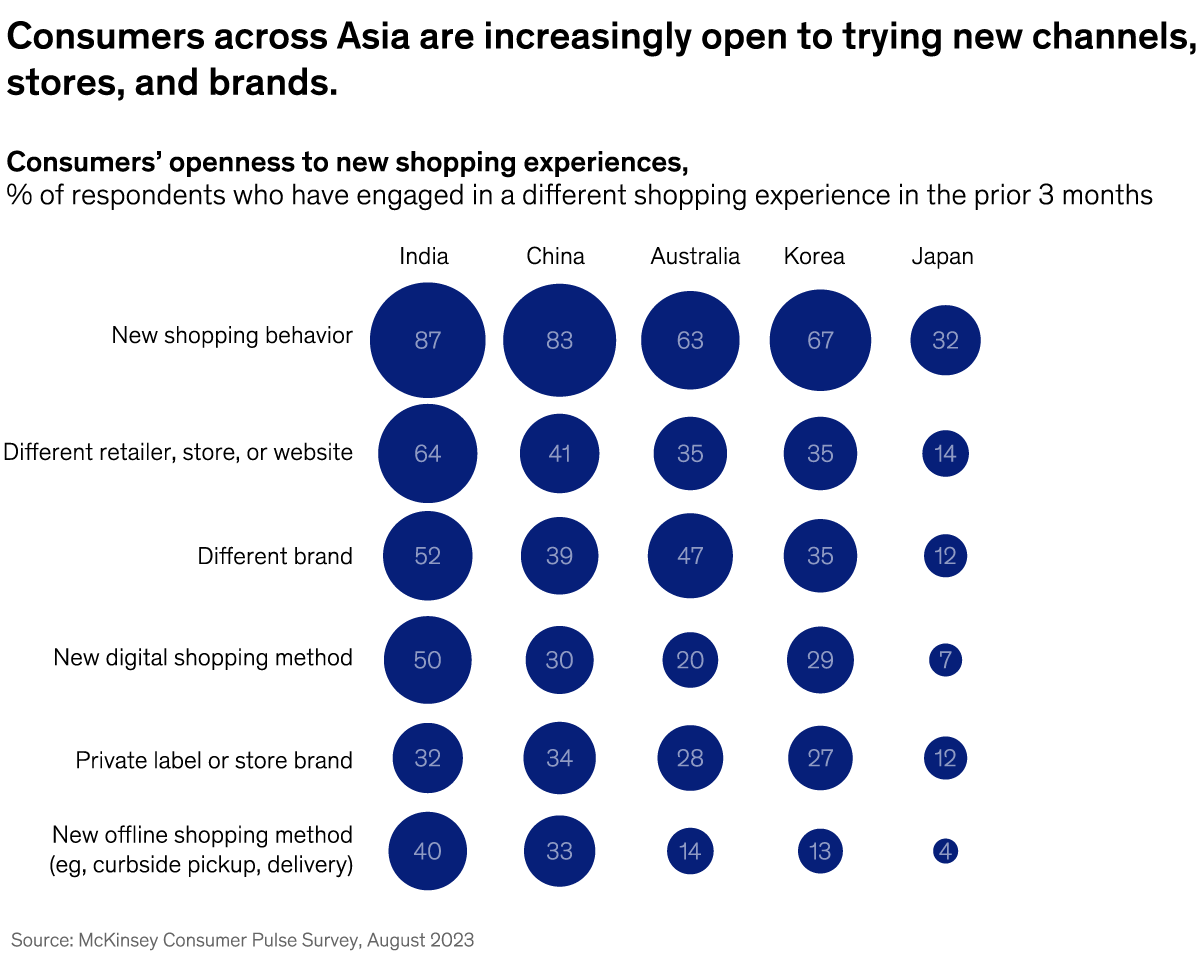Archives
- By thread 5365
-
By date
- June 2021 10
- July 2021 6
- August 2021 20
- September 2021 21
- October 2021 48
- November 2021 40
- December 2021 23
- January 2022 46
- February 2022 80
- March 2022 109
- April 2022 100
- May 2022 97
- June 2022 105
- July 2022 82
- August 2022 95
- September 2022 103
- October 2022 117
- November 2022 115
- December 2022 102
- January 2023 88
- February 2023 90
- March 2023 116
- April 2023 97
- May 2023 159
- June 2023 145
- July 2023 120
- August 2023 90
- September 2023 102
- October 2023 106
- November 2023 100
- December 2023 74
- January 2024 75
- February 2024 75
- March 2024 78
- April 2024 74
- May 2024 108
- June 2024 98
- July 2024 116
- August 2024 134
- September 2024 130
- October 2024 141
- November 2024 171
- December 2024 115
- January 2025 216
- February 2025 140
- March 2025 220
- April 2025 233
- May 2025 239
- June 2025 303
- July 2025 178
-
Gen AI is already starting to transform banking. How can leaders take full advantage?
On Point
Elements for success with gen AI
by "McKinsey On Point" <publishing@email.mckinsey.com> - 01:49 - 9 Nov 2023 -
Save time and cut costs with Adobe Acrobat.
Adobe
Discover how you can boost your ROI.
Everyday processes, enhanced.
Based on a recent study conducted by Pfeiffer Consulting, read this report to discover how you can boost your ROI on Adobe Acrobat.
Powerful digital document processes are finally within reach.
Maximize the investment you’ve made into transforming your workflows by understanding exactly how you can harness Adobe Acrobat in your organisation.
In this report, you’ll learn what it takes to:- Give your team the right tools to do their best work.
- Transform routine tasks to accelerate workflows.
- Save time, cut costs and boost productivity across your entire organisation with Adobe Acrobat.
- Make the most of Acrobat’s built-in security and compliance features.
Acrobat's got it.Adobe and the Adobe logo are either registered trademarks or trademarks of Adobe in the United States and/or other countries. This is not a comprehensive list of all Adobe trademarks. For a full list, refer to the Adobe List of Trademarks. All other trademarks are the property of their respective owners.
By clicking on some of the links in this email, you might be redirected to forms that will be pre-populated with your contact information.
This is a marketing email from Adobe Systems Software Ireland Limited, 4‑6 Riverwalk, Citywest Business Park, Dublin 24, Ireland.
Click here to unsubscribe or send an unsubscribe request to the postal address above. Please review the Adobe Privacy Policy:
Australia
New Zealand
Indonesia
Malaysia
Philippines
Vietnam
Singapore
India
Hong Kong
To ensure email delivery, add demand@info.adobe.com to your address book, contacts, or safe sender list.
If you have a privacy-related complaint, send it to: privacy@adobe.com
View in browser
by "Adobe Document Cloud" <demand@info.adobe.com> - 09:36 - 8 Nov 2023 -
See Sumo Logic at AWS re:Invent in Las Vegas
Sumo Logic
Meet us at re:Invent | Sumo Logic booth #789 | Nov 27-30
 Hi Mohammad,
Hi Mohammad,
AWS re:Invent in Las Vegas is the epicenter of all things cloud, and Sumo Logic looks forward to meeting you there! We were born in the cloud and have partnered with AWS from day one.
The Sumo Logic AI-powered SaaS Log Analytics Platform accelerates cloud insights into action. Keep your mission-critical apps reliable and secure, break down silos, foster cross-team collaboration, troubleshoot AWS issues faster than ever, and simplify Dev, Sec and Ops.
Stop by booth #789 for swag and to meet your friendly neighborhood Sumo Logic product experts, who are more than happy to demo our latest security and high-speed troubleshooting solutions. To meet up in person, schedule a meeting today.
Best,
The Sumo Logic Team
p.s. Until then, check out the GigaOM Radar Report and read why Sumo Logic was honored three times for SIEM and cloud observability!
Sumo Logic, Level 9, 64 York Street, Sydney, NSW 2000
© 2023 Sumo Logic, All rights reserved.Unsubscribe 


by "Sumo Logic" <marketing-info@sumologic.com> - 08:00 - 8 Nov 2023 -
You’ve probably heard of Web3. But what is it, exactly?
On Point
Challenges faced by early Web3 adopters Brought to you by Liz Hilton Segel, chief client officer and managing partner, global industry practices, & Homayoun Hatami, managing partner, global client capabilities
•
Web3-enabled work. From having fixed to flexible schedules and from working in one place to anywhere in the world, people have seen the way they work redefined by the COVID-19 pandemic, digital technologies, and globalization. The transition to distributed, project-based work may expand economic access and the gig economy, tech experts say. Web3 applications and technologies such as blockchain are fueling this change, enabling workers to collaborate directly with clients and colleagues and allowing individuals to truly own their digital work. [HBR]
•
Momentum in Web3. Web3 is the idea of a new, decentralized internet built on blockchains, which are distributed ledgers controlled communally by participants. If and when Web3 fully arrives, it will, in theory, signal a new era of the internet, one in which community-run networks control use and access. Interest in Web3 platforms and applications is increasing. In 2022, Web3 technologies netted $62 billion in equity investment, compared with $16 billion in 2018, according to Lareina Yee, chair of the McKinsey Technology Council, and coauthors.
•
Web3-related challenges. Web3 technologies are already being taken up by tech pioneers. But early Web3 adopters face several challenges. For one thing, Web3 has relatively poor user experience standards when compared with Web2 products, which have been fine-tuned over two decades of development. The utility of Web3 products, such as NFTs, also remains unclear to many consumers and enterprises. Read our McKinsey Explainer to explore three main technologies that support Web3 and some real-world examples.
— Edited by Belinda Yu, editor, Atlanta
Introducing Insights to Impact
Be among the first to subscribe to this free newsletter delivering a weekly roundup of analysis that’s influencing decision makers. Each Friday, we’ll offer insights across geographies, industries, and capabilities to help leaders identify new opportunities to spur innovation and growth, sustainably.
Click to subscribeThis email contains information about McKinsey's research, insights, services, or events. By opening our emails or clicking on links, you agree to our use of cookies and web tracking technology. For more information on how we use and protect your information, please review our privacy policy.
You received this email because you subscribed to the On Point newsletter.
Copyright © 2023 | McKinsey & Company, 3 World Trade Center, 175 Greenwich Street, New York, NY 10007
by "McKinsey On Point" <publishing@email.mckinsey.com> - 01:06 - 8 Nov 2023 -
Shipping to Production
Shipping to Production
A book that I have been waiting for a long time is finally out: The Software Engineer's Guidebook, written by Gergely Orosz, a software engineer and author of 'The Pragmatic Engineer Newsletter.' Since the book is out, I contacted Gergely to inquire whether he would be willing to share a chapter with the newsletter audience. To my delight, he kindly agreed. The chapter I've chosen is 'Shipping to Production.' I hope you enjoy it. Forwarded this email? Subscribe here for moreThis is a sneak peek of today’s paid newsletter for our premium subscribers. Get access to this issue and all future issues - by subscribing today.
Latest articles
If you’re not a subscriber, here’s what you missed this month.
The 6 Most Impactful Ways Redis is Used in Production Systems
The Tech Promotion Algorithm: A Structured Guide to Moving Up
To receive all the full articles and support ByteByteGo, consider subscribing:
A book that I have been waiting for a long time is finally out: The Software Engineer's Guidebook, written by Gergely Orosz, a software engineer and author of 'The Pragmatic Engineer Newsletter.'
Since the book is out, I contacted Gergely to inquire whether he would be willing to share a chapter with the newsletter audience. To my delight, he kindly agreed. The chapter I've chosen is 'Shipping to Production.' I hope you enjoy it.
You can check out the book here: The Software Engineer's Guidebook
As a tech lead, you’re expected to get your team’s work into production quickly and reliably. But how does this happen, and which principles should you follow? This depends on several factors: the environment, the maturity of the product being worked on, how expensive outages are, and whether moving fast or having no reliability issues is more important.
This chapter covers shipping to production reliably in different environments. It highlights common approaches across the industry, and helps you refine how your team thinks about this process. We cover:
Extremes in shipping to production
Typical shipping processes at different types of companies
Principles and tools for shipping to production responsibly
Additional verification layers and protections
Taking pragmatic risks to move faster
Additional considerations for defining a deployment process
Selecting an approach
1. EXTREMES IN SHIPPING TO PRODUCTION
Let’s start with two “extremes” in shipping to production:
YOLO shipping
The You Only Live Once (YOLO) approach is used for many prototypes, side projects, and unstable products like alpha/beta versions. It’s also how some urgent changes make it into production.
The idea is simple, make a change in production and check if it works in production. Examples of YOLO shipping include:
SSH into a production server → open an editor (e.g. vim) → make a change in a file → save the file and/or restart the server → see if the change works.
Make a change to a source code file → force land this change without a code review → push a new deployment of a service.
Log on to the production database → execute a production query to fix a data issue (e.g. modifying records with issues) → hope this fixes the problem.
YOLO shipping is as fast as it gets when shipping a change to production. However, it also has the highest risk of introducing new issues into production because there is no safety net. For products with few to zero production users, the damage done by introducing bugs into production can be low, so this approach is justifiable.
YOLO releases are common for:
Side projects
Early-stage startups with no customers
Mid-sized companies with poor engineering practices
Resolving urgent incidents at places without well-defined incident handling practices
As a software product grows and more customers rely on it, code changes need to go through extra validation before production. Let’s go to the other extreme: a team obsessed with doing everything possible to ship zero bugs into production.
Thorough verification through multiple stages
This is an approach used for mature products with many valuable customers, where a single bug can cause major problems. This rigorous approach is used if bugs could result in customers losing money, or make them switch to a competitor’s offering.
Several verification layers are in place, with the goal of simulating the real world with greater accuracy, such as:
Local validation. Tooling for software engineers to catch obvious issues.
CI validation. Automated tests like unit tests and linting on every pull request.
Automation before deploying to a test environment. More expensive tests such as integration tests or end-to-end tests, before deployment to the next environment.
Test environment #1. More automated testing, like smoke tests. Quality assurance engineers might manually exercise the product, running manual tests and doing exploratory testing.
Test environment #2. An environment where a subset of real users – such as internal company users or paid beta testers – exercise the product. The environment is coupled with monitoring and the rollout is halted upon sign of a regression.
Pre-production environment. An environment in which the final set of validations are run. This often means running another set of automated and manual tests.
Staged rollout. A small subset of users get the changes, and the team monitors for key metrics to remain healthy, and checks customer feedback. A staged rollout strategy depends on the riskiness of the change being made.
Full rollout. As the staged rollout increases, at some point changes are pushed to all customers.
Post-rollout. Issues arise in production, for which monitoring and alerting is set up, and also a feedback loop with customers. If there’s an issue, it’s dealt with by the standard oncall process. We discuss this process more in Part 5: “Reliable software engineering.”
A heavyweight release process is used by:
Highly regulated industries, such as healthcare, aviation or automotive.
Telecommunications providers, where it’s common to have ~6 months of thorough testing of changes before major changes are shipped to customers.
Banks, where bugs could cause financial losses.
Traditional companies with legacy codebases with little automated testing. These places want to keep quality high and are happy to slow down releases by adding verification stages.
2. TYPICAL SHIPPING PROCESSES
Different companies tend to take different steps in shipping to production. Below is a summary of typical approaches, highlighting the variety of processes:
Startups
Startups typically do fewer quality checks. These companies tend to prioritize moving fast and iterating quickly, and often do so without much of a safety net. This makes perfect sense if they don't have customers yet. As customers arrive, teams need to find ways to avoid regressions and the shipping of bugs.
Startups are usually too small to invest in automation, and so most do manual QA – including the founders being the ‘ultimate’ testers, while some places hire dedicated QA folks. As a company finds its product-market fit, it’s more common to invest in automation. And at tech startups that hire strong engineering talent, these teams can put automated tests in place from day one.
Traditional companies
These places tend to rely more heavily on QAs teams. Automation is sometimes present at more traditional companies, but typically they rely on large QA teams to verify what is built. Working on branches is also common; it's rare to have trunk-based development.
Code mostly gets pushed to production on a weekly schedule or even less frequently, after the QA team verifies functionality.
Staging and UAT (User Acceptance Testing) environments are more common, as are larger, batched changes shipped between environments. Sign-off is required from the QA team, the product manager, or the project manager, in order to progress the release to the next stage.
Large tech companies
These places typically invest heavily in infrastructure and automation related to shipping with confidence. Such investments often include automated tests which run quickly and deliver rapid feedback, canarying, feature flags and staged rollouts.
These companies aim for a high quality bar, but also to ship immediately when quality checks are complete, working on trunk. Tooling to deal with merge conflicts becomes important, given that some places can make over 100 changes on trunk per day. For details on QA at Big Tech, see the article How Big Tech does QA.
Meta’s core product
Facebook, as a product and engineering team, merits a separate mention, because this organization has a sophisticated and effective approach few other companies use.
This Meta product has fewer automated tests than many would assume, but on the other hand, Facebook has an exceptional automated canarying functionality, where the code is rolled out through 4 environments, from a testing environment with automation, through one that all employees use, then through a test market that is a smaller geographical region, and finally to all users. At each stage, the rollout automatically halts if the metrics are off.
3. PRINCIPLES AND TOOLS
What are principles and approaches worth following for shipping changes to production responsibly? Consider these:
Development environments
Use a local or isolated development environment. Engineers should be able to make changes on their local machine, or in an isolated environment unique to them. It’s more common for developers to work in local environments. However, places like Meta are shifting to remote servers for each engineer. From the article, Inside Facebook’s Engineering culture:
“Most developers work with a remote server, not locally. Starting from around 2019, all web and backend development is done remotely, with no code copied locally, and Nuclide facilitating this workflow. In the background, Nuclide was using virtual machines (VMs) at first, later moving to OnDemand instances – similar to how GitHub Codespaces works today – years before GitHub launched Codespaces.
Mobile development is still mostly done on local machines, as doing this in a remote setup, as with web and backend, has tooling challenges.”
Verify locally. After writing the code, do a local test to ensure it works as expected.
Testing and verification
Consider edge cases and test for them. Which obscure cases does your code change need to account for? Which real-world use cases haven’t you accounted for yet?
Before finalizing work on the change, compile a list of edge cases. Consider writing automated tests for them, if possible. At least do manual testing. Coming up with a list of unconventional edge cases is a task for which QA engineers or testers can be very helpful.
Write automated tests to validate your changes. After manually verifying your changes, exercise them with automated tests. If following a methodology like test driven development (TDD,) you might do this the other way around by writing automated tests first, then checking that your code change passes them.
Another pair of eyes: a code review. With your code changes complete, put up a pull requests and get somebody with context to look at your code changes. Write a clear, concise description of the changes, which edge cases are tested for, and get a code review.
All automated tests pass, minimizing the risk of regressions. Before pushing the code, run all the existing tests for the codebase. This is typically done automatically, via the CI/CD system (continuous integration/continuous deployment.)...
Keep reading with a 7-day free trial
Subscribe to
ByteByteGo Newsletterto keep reading this post and get 7 days of free access to the full post archives.A subscription gets you:
An extra deep dive on Thursdays Full archive Many expense it with team's learning budget Like
Comment
Restack
© 2023 ByteByteGo
548 Market Street PMB 72296, San Francisco, CA 94104
Unsubscribe
by "ByteByteGo" <bytebytego@substack.com> - 11:38 - 7 Nov 2023 -
Your invitation: Join New Relic's user meetup in Amsterdam on 16 November
Hello,
I’m Harry Kimpel, Principal Developer Relations Engineer at New Relic, and I’d like to invite you to our next user meetup in Amsterdam. Join other local users at 2pm on Thursday 16th November at droog for food, drinks, swag, and of course—data talk. We’ll also wrap up the day with a boat trip along the canal with wine and cheese.
In this meetup, you’ll learn dev toolchain best practices connecting APM, infrastructure, and logs, in addition to next-gen telemetry: OTel, security and lAST. We’ll also show you around Grok, our new GenAI observability assistant, that translates human speak into queries, and query results into simple explanations. Get the latest on our product roadmap and new releases. There will be multiple giveaways on the day too.
AGENDA
- 2:00pm: Arrival, networking, and refreshments
- 2:30pm: What’s new and what’s next in observability
- 3.00pm: Data talks
- Convergence: security and IAST
- Connected: Dev toolchain: APM, infra and logs
- Next Gen Telemetry - OTel
- AI: New Relic generative AI and Grok
- 4:00pm: NRQL function of the day
- 4:15pm: All your questions answered by our experts
- 4:30pm: Enjoy a boat trip with cheese and wine along the canal
Share this invitation with your colleagues. Everyone is welcome.
We look forward to seeing you there!
Best regards,
Harry Kimpel,
Principal Developer Relations Engineer, EMEA
View this online · Unsubscribe
This email was sent to info@learn.odoo.com. If you no longer wish to receive these emails, click on the following link: Unsubscribe
by "Harry Kimpel" <emeamarketing@newrelic.com> - 04:05 - 7 Nov 2023 -
Innovative growers: A view from the top
Invest productively New from McKinsey Quarterly

Innovative growers: A view from the top
Invest productively 

This email contains information about McKinsey’s research, insights, services, or events. By opening our emails or clicking on links, you agree to our use of cookies and web tracking technology. For more information on how we use and protect your information, please review our privacy policy.
You received this email because you subscribed to our McKinsey Quarterly alert list.
Copyright © 2023 | McKinsey & Company, 3 World Trade Center, 175 Greenwich Street, New York, NY 10007
by "McKinsey Quarterly" <publishing@email.mckinsey.com> - 12:39 - 7 Nov 2023 -
Competition is fierce. How can consumer companies ‘rewire’ their enterprises to grow?
On Point
What high-performing operating models do Brought to you by Liz Hilton Segel, chief client officer and managing partner, global industry practices, & Homayoun Hatami, managing partner, global client capabilities
•
Price pressures. For years, consumer goods companies have struggled to absorb the rising costs of materials, transportation, and labor. Passing along some of those outlays helped companies cope with surging expenses. Now, as cost pressures moderate, leaders and investors are asking if continued price increases are necessary. After one French grocery chain recently placed price warnings on food products like chocolate and tea, consumer companies might confront increased calls for them to reduce prices throughout Europe. [Reuters]
•
Harder choices. Leaders of consumer companies are navigating economic uncertainty, a tough labor market, and geopolitical conflicts—all while consumers keep changing their habits and preferences. Today’s business leaders face harder choices, McKinsey partner Shaun Callaghan and coauthors explain. They can no longer focus on either growth or profitability; shareholders demand both. Digital technologies are becoming essential to every part of the business. Furthermore, with competition stiffening, companies should be both local and global.
— Edited by Belinda Yu, editor, Atlanta
Introducing Insights to Impact
Be among the first to subscribe to this free newsletter delivering a weekly roundup of analysis that’s influencing decision makers. Each Friday, we’ll offer insights across geographies, industries, and capabilities to help leaders identify new opportunities to spur innovation and growth, sustainably.
Click to subscribeThis email contains information about McKinsey's research, insights, services, or events. By opening our emails or clicking on links, you agree to our use of cookies and web tracking technology. For more information on how we use and protect your information, please review our privacy policy.
You received this email because you subscribed to the On Point newsletter.
Copyright © 2023 | McKinsey & Company, 3 World Trade Center, 175 Greenwich Street, New York, NY 10007
by "McKinsey On Point" <publishing@email.mckinsey.com> - 11:06 - 6 Nov 2023 -
Last Chance! API Management Best Practices [Webinar]
SmartBear
SmartBear recognized in 2023 Gartner® Magic Quadrant ™Hi Abul,
Understanding the complex API landscape and determining the right tools and resources for creating high-quality APIs can be a challenging task.
That's why we'd like to invite you to our upcoming webinar, where we'll discuss our placement in the Gartner® Magic Quadrant™ as a Visionary and how we're addressing your evolving needs to deliver top-notch API management tools.
In this webinar, we will dive into the following topics:
· The evolution to a gateway-agnostic API management strategy (aka "the great unbundling")
· Understanding the crucial role of internal and external API management
· A sneak peek into what’s coming from SmartBear in 2024Abby Myers
Growth MarketingSmartBear
 This email was sent to info@learn.odoo.com by SmartBear Software, 450 Artisan Way, Somerville, MA. 02145, 617684.2600, www.smartbear.com. We hope you found this email of interest. However, we value your privacy. If you do not wish to receive future correspondence from us, please click here to manage email preferences.
This email was sent to info@learn.odoo.com by SmartBear Software, 450 Artisan Way, Somerville, MA. 02145, 617684.2600, www.smartbear.com. We hope you found this email of interest. However, we value your privacy. If you do not wish to receive future correspondence from us, please click here to manage email preferences.
by "SmartBear API Team" <api-lifecyle-team@smartbearmail.com> - 09:44 - 6 Nov 2023 -
School Bus Tracking Software Equipped with Top-Notch Features to Safe Guard Students
School Bus Tracking Software Equipped with Top-Notch Features to Safe Guard Students
Get a 360-degree view of student attendance, pickups/drops, safety, driving patterns, routes, delays, etc.Our advanced school bus tracking software is designed to be user-friendly and cost-effective, making it an excellent choice for managing school bus operations.
Different Users Different apps

Key Features

Provide school buses with advanced tools to reduce workload and increase productivity.

Uffizio Technologies Pvt. Ltd., 4th Floor, Metropolis, Opp. S.T Workshop, Valsad, Gujarat, 396001, India
by "Uffizio Software Technologies Pvt Ltd" <sunny.thakur@uffizio.com> - 07:00 - 6 Nov 2023 -
Coming Dec 4-6: Take a deep dive into AI and HPC at this oneAPI DevSummit.
Coming Dec 4-6: Take a deep dive into AI and HPC at this oneAPI DevSummit.
Immerse yourself in this free two-day virtual event focused on cross-platform development and future technologies.
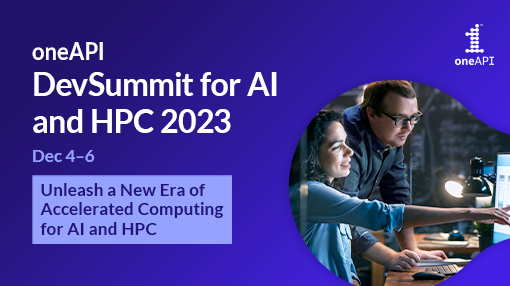


Onboarding Day: December 4, 9:00am – 10:30am CT
AI: December 5, 9:00am – 5:00pm CT
HPC: December 6, 9:00am – 3:30pm CTRegister now 
Are you a researcher, data scientist, or developer looking to build AI applications that seamlessly scale cross-architecture and edge-to-cloud? Perhaps you have an existing AI or HPC-based application and want to learn how oneAPI can help you quickly and efficiently optimize it for your hardware of choice?
If the answer is yes, join renowned industry experts for a deep dive into oneAPI cross-architecture software development spanning:
- AI and analytics using industry-standard frameworks and tools, performance-optimized by oneAPI
- What’s new with oneAPI, including the Intel® AI Analytics and HPC Toolkits
- Overviews of key performance analysis tools, including how to use them and where to get them
- The latest on the oneAPI specification
- Hands-on workshops
We hope to see you there!
Register now 





If you forward this email, your contact information will appear in any auto-populated form connected to links in this email.
This was sent to info@learn.odoo.com because you are subscribed to Events & Tradeshows. To view and manage your marketing-related email preferences with Intel, please click here.
© 2023 Intel Corporation
Intel Corporation, 2200 Mission College Blvd., M/S RNB4-145, Santa Clara, CA 95054 USA. www.intel.comPrivacy | Cookies | *Trademarks | Unsubscribe | Manage Preferences
by "Intel Developer Zone" <intel@plan.intel.com> - 01:26 - 6 Nov 2023 -
They’re not buying it: A leader’s guide to better marketing tactics
On the market Brought to you by Liz Hilton Segel, chief client officer and managing partner, global industry practices, & Homayoun Hatami, managing partner, global client capabilities
The vagaries of consumer sentiment are keeping marketers on their toes. Our recent research shows that in response to the US economy’s mixed signals, shoppers are behaving in contradictory ways: they are still spending but trading down to less expensive products, while splurging occasionally. And increasingly, consumers are omnichannel—they buy on the web, in physical stores, on social media, or through emails, apps, and other digital spaces. In this complex environment, leaders may find it challenging to identify the precise mix of marketing strategies for their target consumers. We’re here to help.
“Many C-suite members underestimate marketing’s potential to create growth, despite the rapid growth in marketing capabilities,” observe McKinsey senior partner Marc Brodherson and colleagues. For example, a fast-food company was spending $150 million a year on marketing, but its brand was almost “invisible,” in the view of its CEO. The solution was to hire a marketing leader with a clear mandate to innovate and use marketing to expand transactions and sales. By working with the finance function to quantify marketing’s impact, the chief marketing officer (CMO) was able to help the company accelerate its year-over-year top-line growth. “Companies with CEOs who view marketing and branding as one of their top two growth levers are much more likely to experience growth than those who do not,” note the McKinsey experts. “It’s imperative for CEOs and CMOs to prioritize the same metrics to ensure they are working toward the same objectives.”
That’s the number of possible ways to take an investor approach to marketing, according to McKinsey senior partners Julien Boudet, Kelsey Robinson, and their coauthors in a McKinsey Quarterly article on how marketing can strengthen resiliency. Marketing budgets are often the first to be cut during uncertain times, but this could be a mistake. A better move may be to adopt an investor mindset: trimming inefficient spending and reinvesting the savings in areas with greater potential for returns. A telecom company saved $65 million a year by streamlining its advertising agency model—it retained a few larger agencies for inspiration and ideas but set up an in-house agency and new partnerships for routine and low-cost work.
That’s McKinsey partner Dianne Esber and colleagues on what makes today’s marketing initiatives different from those of the past. “It’s less about changing what marketing does and more about transforming how the work is done,” they say. For example, traditional one-size-fits-all campaigns may need to be replaced by more nimble content creation that can be adjusted as needed. Marketers may also need to hire content producers and designers who are more data-savvy than was necessary in the past. Our research indicates that companies that successfully integrate data and creativity grow their revenues at twice the average rate of S&P 500 companies.
Forming unique, highly personalized connections with customers is a critical ingredient in marketing success. Long before generative AI made hyperpersonalization possible, executives at McDonald’s were digitizing the company’s restaurants to engage closely with customers. “We have the ability to personalize the menu through our outdoor digital menu boards,” says Daniel Henry, the former executive vice president and chief information officer at McDonald’s, in a discussion with McKinsey senior partner Naufal Khan. “The opportunities to personalize are powerful. How do we give the customer trending items? How do we merchandise to them in a targeted way?” Customers are at the heart of the company’s acquisitions, technology deployment, and data management practices, Henry adds. “When you’re a product-obsessed organization, you think about the consumer before the technology. Technology by itself means nothing.”
Many cross-cultural marketing gaffes have become the stuff of corporate legend. Urban myths or not, these faux pas illustrate that even the most sophisticated marketers can stumble when products and services are released internationally. Cultural differences can be subtle, unexpected, and nuanced across countries and regions, so a sweeping “Asia” or “Europe” marketing strategy is likely headed for failure. As the world’s consumer landscape undergoes dramatic shifts, companies may need to define their target markets with ever greater precision. For example, our research shows that in an urban setting, businesses must “continually adapt to evolving demographics and consumption patterns of cities—and even in neighborhoods within cities.”
Lead by marketing effectively.
— Edited by Rama Ramaswami, senior editor, New York
Share these insights
Did you enjoy this newsletter? Forward it to colleagues and friends so they can subscribe too. Was this issue forwarded to you? Sign up for it and sample our 40+ other free email subscriptions here.
This email contains information about McKinsey’s research, insights, services, or events. By opening our emails or clicking on links, you agree to our use of cookies and web tracking technology. For more information on how we use and protect your information, please review our privacy policy.
You received this email because you subscribed to the Leading Off newsletter.
Copyright © 2023 | McKinsey & Company, 3 World Trade Center, 175 Greenwich Street, New York, NY 10007
by "McKinsey Leading Off" <publishing@email.mckinsey.com> - 04:17 - 6 Nov 2023 -
APC Back-UPS Connect is here
Schneider Electric
East Asia Partner NewsletterAPC Back-UPS Connect is here!Continue connectivity with APC's Back-UPS connect to maximise you broadband availability.
Especially suitable for your distributed devices including your mesh Wi-Fi.
Smart UPS Ultra 10kWThe industry's smallest and lightest UPS from 2.2kW - 10kW to cover all your needs in edge deployment, with their unique ultra slim and flexible design.
Now available in 8kW and 10kW.
Access our training center!Complete your registration to mySchneider today to expand your knowledge on our products and solutions & stay up to date on industry trends.+ Lifecycle Services From energy and sustainability consulting to optimizing the life cycle of your assets, we have services to meet your business needs. Schneider Electric
46 Rungrojthanakul Building. 1st, 10th, 11th Floor, Ratchadapisek Road. Huaykwang
Bangkok - 10310, Thailand
Phone +662 617 5555© 2023 Schneider Electric, All Rights Reserved. Schneider Electric trademarks are owned by Schneider Electric or its affiliated companies in the United States and other countries. All other trademarks are property of their respective owners.
by "Schneider Electric" <reply@se.com> - 02:01 - 6 Nov 2023 -
When times are tough, marketing budgets are often cut. Here’s why that’s shortsighted.
On Point
How to think like a CFO Brought to you by Liz Hilton Segel, chief client officer and managing partner, global industry practices, & Homayoun Hatami, managing partner, global client capabilities
•
Financial blunders. When the business environment is unpredictable, executives may be tempted to prioritize short-term goals at the expense of longer-term growth. Reducing a company’s marketing budget during an economic downturn is one financial slipup that many leaders make, says one founder and CEO. Spending prudently makes sense, but marketing builds connections between brands and audiences. When the economy recovers, companies that haven’t invested in marketing may find that consumers have forgotten them. [Fast Company]
•
Think like a CFO. When times are tough, marketing is always one of the first items on the chopping block, McKinsey senior partner Kelsey Robinson shares on a recent edition of The McKinsey Podcast. Chief marketing officers (CMOs) who realize that effective marketing actually propels growth will apply an investor mindset to marketing. That means thinking a little more like a CFO, Robinson explains. Eliminating inefficient spend can lead to most companies saving 10% to 20% without even cutting the budget. Those dollars can be reinvested in high-growth marketing strategies.
— Edited by Belinda Yu, editor, Atlanta
Introducing Insights to Impact
Be among the first to subscribe to this free newsletter delivering a weekly roundup of analysis that’s influencing decision makers. Each Friday, we’ll offer insights across geographies, industries, and capabilities to help leaders identify new opportunities to spur innovation and growth, sustainably.
Click to subscribeThis email contains information about McKinsey's research, insights, services, or events. By opening our emails or clicking on links, you agree to our use of cookies and web tracking technology. For more information on how we use and protect your information, please review our privacy policy.
You received this email because you subscribed to the On Point newsletter.
Copyright © 2023 | McKinsey & Company, 3 World Trade Center, 175 Greenwich Street, New York, NY 10007
by "McKinsey On Point" <publishing@email.mckinsey.com> - 01:43 - 6 Nov 2023 -
The week in charts
The Week in Charts
Microaggressions in the workplace, unspent federal relief funds, and more Share these insights
Did you enjoy this newsletter? Forward it to colleagues and friends so they can subscribe too. Was this issue forwarded to you? Sign up for it and sample our 40+ other free email subscriptions here.
This email contains information about McKinsey's research, insights, services, or events. By opening our emails or clicking on links, you agree to our use of cookies and web tracking technology. For more information on how we use and protect your information, please review our privacy policy.
You received this email because you subscribed to The Week in Charts newsletter.
Copyright © 2023 | McKinsey & Company, 3 World Trade Center, 175 Greenwich Street, New York, NY 10007
by "McKinsey Week in Charts" <publishing@email.mckinsey.com> - 03:14 - 4 Nov 2023 -
EP84: Top 12 Tips for API Security
EP84: Top 12 Tips for API Security
This week’s system design refresher: *BIG* Announcement: We’ve launched an Instagram account Top 12 Tips for API Security Our Recommended Materials For Cracking Your Next Tech Interview (Youtube video) How To Release A Mobile App Git Vs Github *BIG* Announcement: We’ve launched an Instagram account Forwarded this email? Subscribe here for moreLatest articles
If you’re not a paid subscriber, here’s what you missed this month.
The 6 Most Impactful Ways Redis is Used in Production Systems
The Tech Promotion Algorithm: A Structured Guide to Moving Up
To receive all the full articles and support ByteByteGo, consider subscribing:
This week’s system design refresher:
*BIG* Announcement: We’ve launched an Instagram account
Top 12 Tips for API Security
Our Recommended Materials For Cracking Your Next Tech Interview (Youtube video)
How To Release A Mobile App
Git Vs Github
*BIG* Announcement: We’ve launched an Instagram account
We will post more instagram reels, shorts and diagrams
If you're interested in seeing more, make sure to subscribe to our Instagram account here: https://www.instagram.com/bytebytego/
Top 12 Tips for API Security
Use HTTPS
Use OAuth2
Use WebAuthn
Use Leveled API Keys
Authorization
Rate Limiting
API Versioning
Whitelisting
Check OWASP API Security Risks
Use API Gateway
Error Handling
Input Validation
😘 Kiss bugs goodbye with fully automated end-to-end test coverage (Sponsored)
QA Wolf offers a cost-effective approach to getting 80% test coverage in just 4 months. And they guarantee zero flakes.
They build and maintain your test suite in Playwright + include unlimited parallel test runs on their infrastructure. The benefit? No more manual e2e testing, no more slow QA cycles, and no more bugs.
QA Wolf has multiple case studies of customers saving $200k+/year in QA engineering and infrastructure costs. Schedule a demo to learn more.
PS: They have a 4.8/5 star rating on G2.
Our Recommended Materials For Cracking Your Next Tech Interview
How To Release A Mobile App
The mobile app release process differs from conventional methods. This illustration simplifies the journey to help you understand.
Typical Stages in a Mobile App Release Process:
Registration & Development (iOS & Android):
- Enroll in Apple's Developer Program and Google Play Console as iOS and Android developer
- Code using platform-specific tools: Swift/Obj-C for iOS, and Java/Kotlin for AndroidBuild & Test (iOS & Android):
Compile the app's binary, run extensive tests on both platforms to ensure functionality and performance. Create a release candidate build.QA:
- Internally test the app for issue identification (dogfooding)
- Beta test with external users to collect feedback
- Conduct regression testing to maintain feature stabilityInternal Approvals:
- Obtain approval from stakeholders and key team members.
- Comply with app store guidelines and industry regulations
- Obtain security approvals to safeguard user data and privacyApp Store Optimization (ASO):
- Optimize metadata, including titles, descriptions, and keywords, for better search visibility
- Design captivating screenshots and icons to entice users
- Prepare engaging release notes to inform users about new features and updatesApp Submission To Store:
- Submit the iOS app via App Store Connect following Apple's guidelines
- Submit the Android app via Google Play Console, adhering to Google's policies
- Both platforms may request issues resolution for approvalRelease:
- Upon approval, set a release date to coordinate the launch on both iOS and Android platforms
Over to you:
What's the most challenging phase you've encountered in the mobile app release process?Git Vs Github
Dive into the fascinating world of version control.
First, meet Git, a fundamental tool for developers. It operates locally, allowing you to track changes in your code, much like taking snapshots of your project's progress. This makes collaboration with your team a breeze, even when you're working on the same project.
Now, let's talk about GitHub. It's more than just a platform; it's a powerhouse for hosting Git repositories online. With GitHub, you can streamline team collaboration and code sharing.
Learning Git and GitHub is a fundamental part of software engineering, so definitely try your best to master them.Latest articles
Here are the latest articles you may have missed:
To receive all the full articles and support ByteByteGo, consider subscribing:
Like
Comment
Restack
© 2023 ByteByteGo
548 Market Street PMB 72296, San Francisco, CA 94104
Unsubscribe
by "ByteByteGo" <bytebytego@substack.com> - 11:37 - 4 Nov 2023 -
The state of women at work: Progress and opportunities
Plus, how financial institutions can reinvent themselves While women have been making strides in the C-suite, workplaces have a long way to go before achieving true gender parity, according to the latest Women in the Workplace report, coauthored by McKinsey’s Emily Field, Alexis Krivkovich, and Lareina Yee, in partnership with LeanIn.Org. This month’s featured report looks at the common myths about women’s workplace experiences and career advancement, the specific biases and barriers faced by Asian, Black, Latina, and LGBTQ+ women and women with disabilities, and clear solutions that organizations can implement to make meaningful progress toward gender equality. Other highlights in this month’s issue include the following topics:

Global Banking Annual Review 2023: The Great Banking Transition
Banking profits are up, thanks to rising interest rates, but financial institutions globally need to reinvent themselves in the face of major structural and macroeconomic shifts.
5 priorities
Gen AI and the future of work
Generative AI is front and center for nearly every industry and is poised to change just about everything. What will it mean for your workers?
Dive deeper
Global Energy Perspective 2023
In an evolving energy landscape, our Global Energy Perspective 2023 provides insights into long-term trends that will shape the energy transition.
Imagine what’s possible
Global Trade Explorer
To navigate a more complex and challenging era requires deeper understanding of the full picture of the evolution of global trade flows and the interdependencies and networks created by them.
Enter our digital experience
Courageous growth: Six strategies for continuous growth outperformance
Fewer than one in four companies outpace their industry peers on revenue and profit growth. New McKinsey research reveals the six mindsets and strategies that set these growth outperformers apart.
6 strategies
How to gain and sustain a competitive edge through transformation
Our latest research confirms that a comprehensive approach to transformation, which enables mindset and behavior changes at scale, is crucial to success—including when it comes to outperforming peers.
7 actions
McKinsey Explainers
Find direct answers to complex questions, backed by McKinsey’s expert insights.
Learn more
McKinsey Themes
Browse our essential reading on the topics that matter.
Get up to speed
McKinsey on Books
Explore this month’s best-selling business books prepared exclusively for McKinsey Publishing by Circana.
See the lists
McKinsey Chart of the Day
See our daily chart that helps explain a changing world—as we strive for sustainable, inclusive growth.
Dive in
McKinsey Classics
Is artificial intelligence as prone to bias as the real thing it emulates? Read our 2017 classic “Controlling machine-learning algorithms and their biases” to learn more.
Rewind
Leading Off
Our Leading Off newsletter features revealing research and inspiring interviews to empower you—and those you lead.
Subscribe now— Edited by Eleni Kostopoulos, managing editor, New York
Share these insights
Did you enjoy this newsletter? Forward it to colleagues and friends so they can subscribe too. Was this issue forwarded to you? Sign up for it and sample our 40+ other free email subscriptions here.
This email contains information about McKinsey's research, insights, services, or events. By opening our emails or clicking on links, you agree to our use of cookies and web tracking technology. For more information on how we use and protect your information, please review our privacy policy.
You received this email because you are a registered member of our Monthly Highlights newsletter.
Copyright © 2023 | McKinsey & Company, 3 World Trade Center, 175 Greenwich Street, New York, NY 10007
by "McKinsey Highlights" <publishing@email.mckinsey.com> - 11:03 - 4 Nov 2023 -
Meet the zero consumer
The Shortlist
Four new insights Curated by Liz Hilton Segel, chief client officer and managing partner, global industry practices, & Homayoun Hatami, managing partner, global client capabilities
We understand the challenges of the C-suite, and we’re committed to helping CEOs, both present and future, do the best they can—for their organizations and for the environment. In this edition, we look at what it will take to get to net zero, sonic superpowers, and more. We hope you enjoy the read.
—Liz and Homayoun
Phygital. Quick commerce. RMNs. Zero clue what we’re talking about? These are all ways to reach a rapidly growing group we’re calling zero consumers. Why zero? These shoppers have zero boundaries as to where they shop; zero interest in the midrange, preferring to scrimp and splurge; zero brand loyalty; and they commit to brands working to achieve net zero.
Learn four ways organizations can zero in on this diverse and expanding segment in ‘Zero consumers’: What they want and why it matters, a new article by Resil Das, Surbhi Kalia, and Dymfke Kuijpers.Product and platform is not plug and play. More and more companies in every industry are switching the operating model for their technology teams to so-called product and platform, an organizational approach adopted from technology firms. It’s a key takeaway from organizations that are rewiring to outcompete. But getting it right isn’t easy.
Clear a path for your digital transformation with The big product and platform shift: Five actions to get the transformation right, by Rushabh Gala, Naufal Khan, Ling Lau, Gautam Lunawat, and Anindita Pal.COP is coming. This year, the conference will review the first-ever global stocktake, a report on the progress the world has made toward net zero. As we brace for some tough news, it’s worth revisiting the McKinsey Global Institute’s estimate of what’s at stake in The net-zero transition: What it would cost, what it could bring, our flagship climate report.
Sounds like a superpower. The CEO of Bose told us why she thinks the company’s devotion to sound quality sets it apart: “Sound is not an accessory or something we do on the side: it’s everything we do.” That’s the kind of focus we’ve discovered is characteristic of companies with superpowers.
Here’s some noise you won’t want to cancel: Leading through disruption requires ‘the gene for change,’ an interview with Lila Snyder.
We hope you find these ideas inspiring and helpful. See you in two weeks with four more McKinsey insights for the CEO and others in the C-suite.Share these insights
This email contains information about McKinsey’s research, insights, services, or events. By opening our emails or clicking on links, you agree to our use of cookies and web tracking technology. For more information on how we use and protect your information, please review our privacy policy.
You received this email because you subscribed to The CEO Shortlist newsletter.
Copyright © 2023 | McKinsey & Company, 3 World Trade Center, 175 Greenwich Street, New York, NY 10007
by "McKinsey CEO Shortlist" <publishing@email.mckinsey.com> - 04:50 - 3 Nov 2023 -
Are you struggling to keep up with generative AI? Here’s a quick take.
On Point
Gen AI in 15 charts Brought to you by Liz Hilton Segel, chief client officer and managing partner, global industry practices, & Homayoun Hatami, managing partner, global client capabilities
•
An evolving workplace. Many executives believe that AI’s cognitive capabilities could reach those of humans in a few years’ time. As talent shortages persist, business leaders are considering how their organizations can generate value without as many workers, a US professor shares. Envisioning a future with fewer workers may be faulty, however, as leaders who think only of immediate gains might miss the bigger picture of how entire parts of the business may need to be reimagined. Leaders could instead consider how the workforce will evolve with AI, and what new skills workers will need to acquire. [HBR]
•
So many questions. Ever since ChatGPT made its public debut, businesses have been racing to capture its value. While previous waves of automation technology mostly affected physical work activities, gen AI is likely to have the biggest effect on knowledge work, particularly activities involving decision making and collaboration, find global leader of McKinsey Digital Rodney Zemmel and coauthors. It’s no wonder so many questions are now being asked, including what kinds of jobs gen AI will most affect and how workers feel about the technology.
— Edited by Katherine Tam, editor, New York
Introducing Insights to Impact
Be among the first to subscribe to this free newsletter delivering a weekly roundup of analysis that’s influencing decision makers. Each Friday, we’ll offer insights across geographies, industries, and capabilities to help leaders identify new opportunities to spur innovation and growth, sustainably.
Click to subscribeThis email contains information about McKinsey's research, insights, services, or events. By opening our emails or clicking on links, you agree to our use of cookies and web tracking technology. For more information on how we use and protect your information, please review our privacy policy.
You received this email because you subscribed to the On Point newsletter.
Copyright © 2023 | McKinsey & Company, 3 World Trade Center, 175 Greenwich Street, New York, NY 10007
by "McKinsey On Point" <publishing@email.mckinsey.com> - 01:23 - 3 Nov 2023 -
The Indian travel market, corporate venture capital, resilient leadership, and more big reads for the weekend
Unwind with these reads Brought to you by Liz Hilton Segel, chief client officer and managing partner, global industry practices, & Homayoun Hatami, managing partner, global client capabilities
QUOTE OF THE DAY
chart of the day
Ready to unwind?
—Edited by Joyce Yoo, editor, New York
Share these insights
Did you enjoy this newsletter? Forward it to colleagues and friends so they can subscribe too. Was this issue forwarded to you? Sign up for it and sample our 40+ other free email subscriptions here.
This email contains information about McKinsey's research, insights, services, or events. By opening our emails or clicking on links, you agree to our use of cookies and web tracking technology. For more information on how we use and protect your information, please review our privacy policy.
You received this email because you subscribed to our McKinsey Global Institute alert list.
Copyright © 2023 | McKinsey & Company, 3 World Trade Center, 175 Greenwich Street, New York, NY 10007
by "McKinsey Daily Read" <publishing@email.mckinsey.com> - 12:29 - 3 Nov 2023





